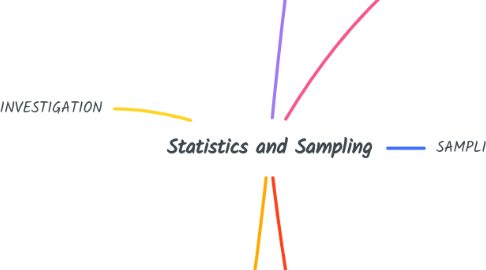
1. IN INVESTIGATION
1.1. Statistic Method
1.1.1. Colect, observate through graphics, registers of data.
1.1.1.1. If there is no register of data census and surveys should be needs in terms of determain the sampling.
1.1.2. It has 6 main phases:
1.1.2.1. 1.Planning and preparation. 2.Collection. 3.Criticism and codification. 4.Prosecution. 5.Analysis and interpretation (number and graph). 6.Publication.
1.1.3. Getting ready to investigate implies:
1.1.3.1. Plan with main aspects: -Detailed patterns. -Procedures -Predict possible Issues
1.1.4. Object of investigation Finality Info. source Procedures MateriaFinancial sources and costs.
1.1.5. Cuantitative or Cualitative
1.1.6. Limitate the object to investigate
1.2. Procedures
1.2.1. How,who,which approach, which ones are going to be the standards and guidelines for the statistic process in the investigation?
1.2.1.1. In divided in three main aspects:
1.2.1.1.1. 1. Clarity and Publicity: Through the publication of the investigation, observers and observed, must know the findings, those must be comprehensible and clear.
1.2.1.1.2. 2.Simple: Instructions, forms, finality, socialization must be presented in a simple and clear language.
1.2.1.1.3. 3.Utility: Every statistic must have a clear purpose on the investigation.
1.3. Investigation Systems
1.3.1. 1.Automatic recopilation
1.3.1.1. Natality,mortality, migration, demographic variavles, e.t.c.
1.3.2. 2. Intencional Recopilation
1.3.2.1. Surveys, census, systems of works surveys, questionaries.
1.3.3. 3. Combined
1.3.3.1. Both Systems complements each other.
2. Appearance, transformation and disappearance of data.
3. SAMPLING AND VARIABLES
3.1. Population
3.1.1. Set of Characteristics from which the sample is extracted.
3.1.1.1. Finite or infinite
3.2. Elements- Unities
3.2.1. People. elements or things.
3.3. Framework
3.3.1. Aceptable material related to the Sampling
3.4. Characteristics
3.4.1. Traits, qualities or properties
4. DEFINITION
4.1. Key words: Observation, ordering, quantification and analisis.
4.2. Observation, collection, organization, analysis and numerical description of the information to describe a phenomenon.
4.2.1. Divided in two main stages
4.2.1.1. Descriptive or deductive statistics
4.2.1.2. Inductive or inferential statistics, ANALITIC
5. IMPORTANCE
5.1. Appearance, transformation and disappearance of data.
5.2. Stablishing relationship between variables, phenomens.
5.3. Obtain conclusions, to determine further actions.
5.4. Validity and Reliability
6. SOURCES OF INFORMATION
6.1. DIRECT
6.1.1. Observation and registering directly from a desireble knowledge of an element.
6.2. INDIRECT
6.2.1. Depends of abundancy, extention and Quality of Direct sources to full fil Indirect sources.
